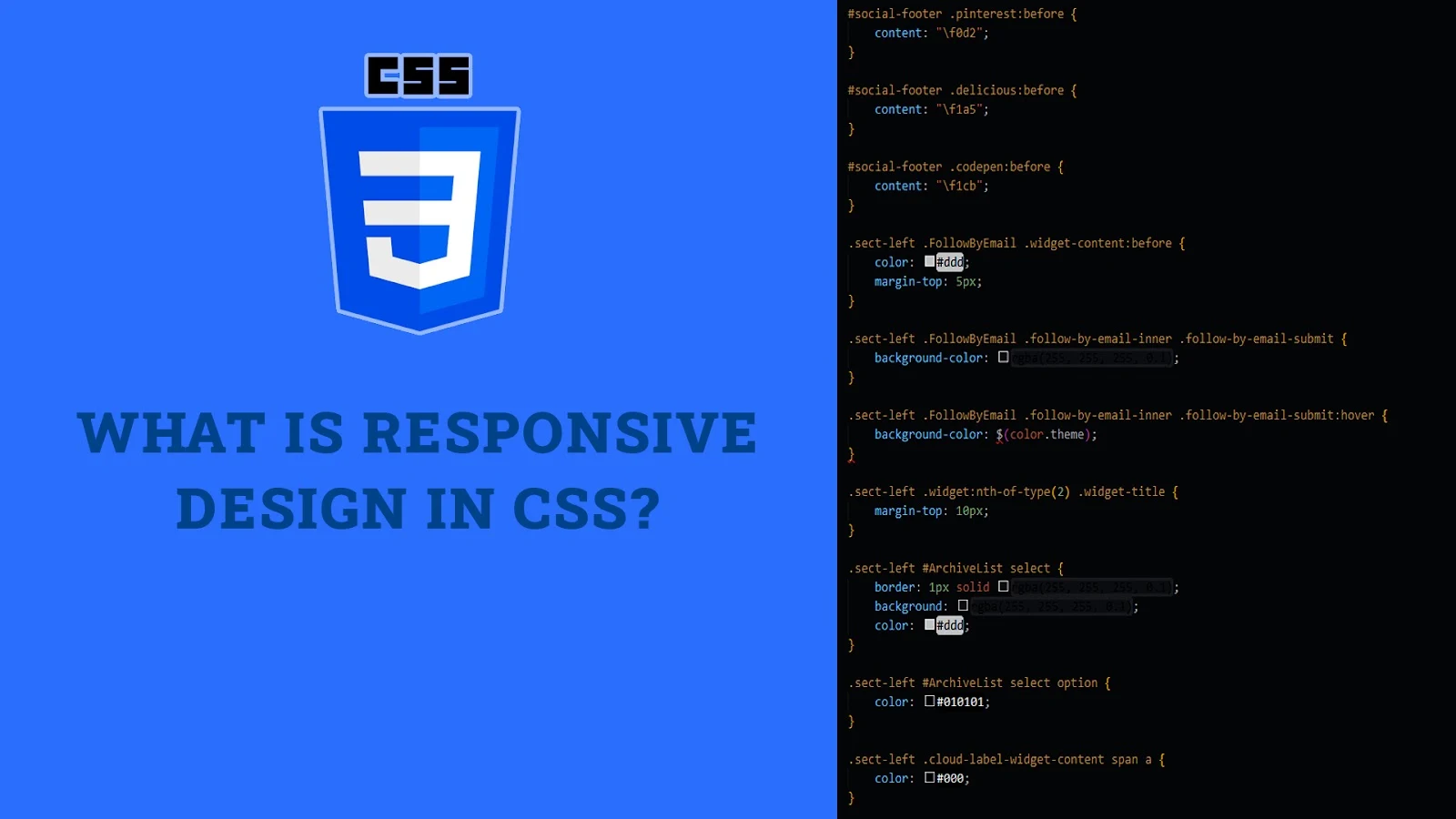Responsive design is a web development approach aimed at creating websites that provide an optimal viewing and interaction experience across a wide range of devices and screen sizes. This approach ensures that web pages render well on various devices, from desktops and laptops to tablets and smartphones. Responsive design uses fluid grids, flexible images, and media queries to achieve a seamless user experience.
Fluid Grids
Fluid grids use relative units like percentages instead of fixed units like pixels to define the width of elements. This approach allows elements to resize proportionally to their parent container, making the layout more flexible and adaptive to different screen sizes.
Example:
.container {
width: 100%;
max-width: 1200px;
margin: 0 auto;
}
.column {
float: left;
width: 33.333%; /* One-third width */
padding: 10px;
}Supporting HTML:
<!DOCTYPE html>
<html>
<head>
<link rel="stylesheet" href="styles.css">
</head>
<body>
<div class="container">
<div class="column">Column 1</div>
<div class="column">Column 2</div>
<div class="column">Column 3</div>
</div>
</body>
</html>Flexible Images
Flexible images are images that scale along with the layout to fit different screen sizes. This can be achieved by setting the maximum width of the image to 100% of its parent container, ensuring that the image resizes proportionally.
Example:
img {
max-width: 100%;
height: auto;
}Supporting HTML:
<!DOCTYPE html>
<html>
<head>
<link rel="stylesheet" href="styles.css">
</head>
<body>
<div class="container">
<img src="image.jpg" alt="Responsive Image">
</div>
</body>
</html>Media Queries
Media queries allow you to apply different CSS rules based on the characteristics of the user's device, such as screen width, height, resolution, and orientation. This makes it possible to create responsive designs that adapt to various devices.
Example:
/* Default styles for desktop */
body {
font-size: 16px;
}
/* Styles for tablets */
@media only screen and (max-width: 768px) {
body {
font-size: 14px;
}
}
/* Styles for smartphones */
@media only screen and (max-width: 480px) {
body {
font-size: 12px;
}
}Supporting HTML:
<!DOCTYPE html>
<html>
<head>
<link rel="stylesheet" href="styles.css">
</head>
<body>
<p>This text will adjust its size based on the screen width.</p>
</body>
</html>Responsive Typography
Responsive typography involves scaling text size dynamically based on the viewport size, ensuring optimal readability across devices. This can be achieved using relative units like ems or rems and CSS functions like calc().
Example:
body {
font-size: calc(1em + 1vw); /* Font size scales with viewport width */
}
h1 {
font-size: calc(2em + 1vw);
}Supporting HTML:
<!DOCTYPE html>
<html>
<head>
<link rel="stylesheet" href="styles.css">
</head>
<body>
<h1>Responsive Heading</h1>
<p>Responsive text content that adjusts based on the viewport size.</p>
</body>
</html>Responsive Images
Responsive images are images that adapt to different screen sizes and resolutions. You can achieve this using the <picture> element, srcset attribute, and CSS techniques to serve different images based on the device's characteristics. This ensures that users on different devices receive appropriately sized images, improving loading times and user experience.
Example using <picture> Element:
<picture>
<source srcset="image-large.jpg" media="(min-width: 800px)">
<source srcset="image-medium.jpg" media="(min-width: 500px)">
<img src="image-small.jpg" alt="Responsive Image">
</picture>Example using srcset Attribute:
<img src="image-small.jpg" srcset="image-medium.jpg 500w, image-large.jpg 800w" sizes="(max-width: 600px) 100vw, 50vw" alt="Responsive Image">Supporting HTML:
<!DOCTYPE html>
<html>
<head>
<link rel="stylesheet" href="styles.css">
</head>
<body>
<div class="container">
<picture>
<source srcset="image-large.jpg" media="(min-width: 800px)">
<source srcset="image-medium.jpg" media="(min-width: 500px)">
<img src="image-small.jpg" alt="Responsive Image">
</picture>
</div>
</body>
</html>Fun Facts and Little-Known Insights
- Fun Fact: The term "responsive web design" was first coined by Ethan Marcotte in a 2010 article that laid the foundation for modern responsive design techniques.
- Insight: Responsive design not only improves user experience but also enhances SEO, as search engines prefer mobile-friendly websites.
- Secret: Combining responsive design with performance optimization techniques, such as lazy loading and optimizing images, can significantly improve page load times and user engagement.
Conclusion
In this article, we explored the concept of responsive design and its key components, including fluid grids, flexible images, media queries, responsive typography, and responsive images. Responsive design ensures that websites provide an optimal viewing and interaction experience across a wide range of devices, from desktops to smartphones. By mastering these techniques, you can create modern, adaptable, and user-friendly web designs that cater to the needs of all users.
Understanding and effectively implementing responsive design is crucial for any web developer, as it significantly enhances the usability, accessibility, and performance of web pages. By incorporating responsive design principles into your projects, you can ensure that your websites are both visually appealing and functional across different devices and screen sizes.
 Reviewed by Curious Explorer
on
Sunday, December 08, 2024
Rating:
Reviewed by Curious Explorer
on
Sunday, December 08, 2024
Rating:




No comments: